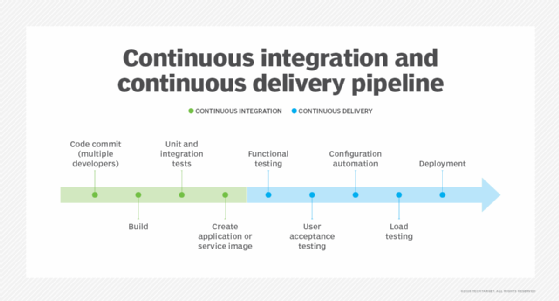What is CI, CD & CT?
What is CI, CD & CT?
These are key concepts in modern software development practices (DevOps) that focus on automating and improving the process of building, testing, and deploying software.
CI (Continuous Integration):
- Continuous Integration is a development practice where code changes are frequently integrated into a shared repository(e.g.: GitHub ).
- The primary goal is to catch integration issues early by automatically building and testing code as soon as it's integrated.
- CI helps prevent the accumulation of bugs, ensures code consistency, and promotes collaboration among developers.
CD (Continuous Delivery):
- Continuous Delivery extends CI by automating the deployment process to various environments, making the codebase always deployable.
- The goal is to have automated deployment pipelines that enable efficient and consistent releases.
- CD emphasizes keeping the application in a deployable state, enabling frequent, reliable, and low-risk deployments.
CT (Continuous Testing):
- Continuous Testing involves testing software at every stage of the development and delivery pipeline.
- It includes various types of tests like unit tests, integration tests, performance tests, and security tests.
- CT ensures rapid feedback on code quality, identifies issues early, and maintains the reliability of the application.
- What are the benefits of following DevOps practices?
Benefits of Following DevOps Practices:
- Faster Time-to-Market: DevOps practices streamline the development and deployment process, enabling faster delivery of features and updates to users.
- Higher Quality: Continuous testing and integration catch defects early, resulting in higher code quality and fewer bugs in production.
- Reduced Risk: Automation and consistent deployment practices minimize the risk of human errors and configuration inconsistencies.
- Improved Collaboration: DevOps encourages collaboration between development and operations teams, leading to better communication and shared goals.
- Scalability: Automated provisioning and deployment allow for easier scaling of infrastructure to meet changing demand.
- Efficient Resource Utilization: DevOps practices optimize resource usage, reducing waste and lowering operational costs.
- Continuous Feedback: Frequent testing and integration provide continuous feedback on the application's health and quality.
- Innovation and Experimentation: Automation frees up time for teams to focus on innovation and experimenting with new features.
- Shorter Feedback Loops: With faster cycles, developers receive quicker feedback from users, enabling them to iterate and improve faster.
- Consistency: DevOps practices ensure consistent environments, configurations, and deployment processes, leading to fewer production issues.
- Customer Satisfaction: Faster delivery, higher quality, and improved stability result in a better user experience and higher customer satisfaction.
- Regulatory Compliance: DevOps practices can help implement and maintain compliance with various regulations and security standards.

Comments
Post a Comment